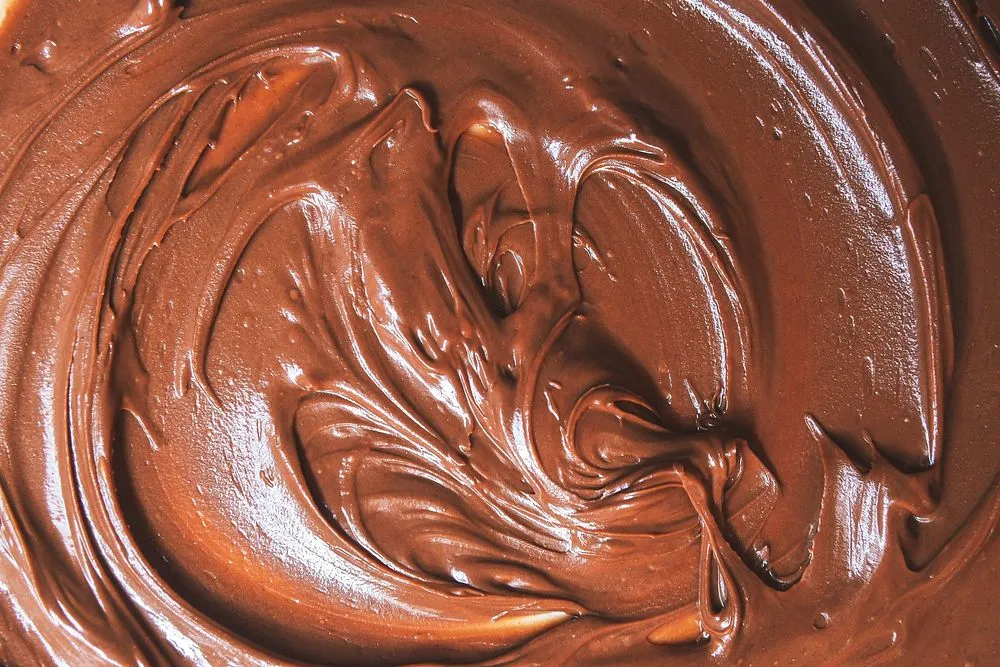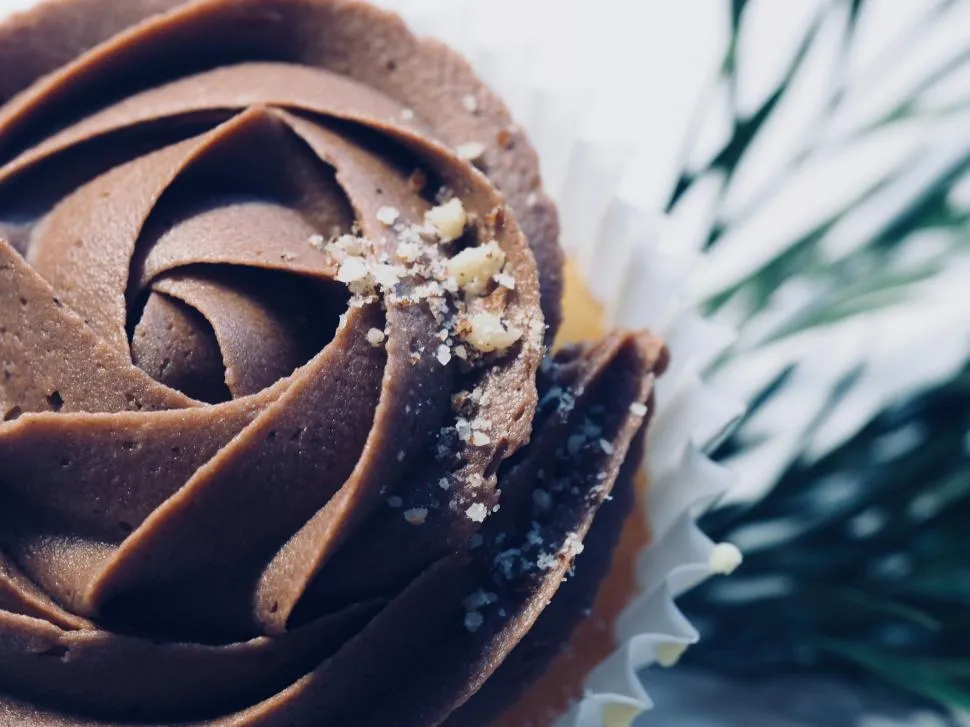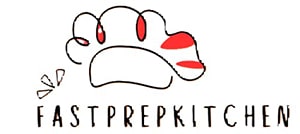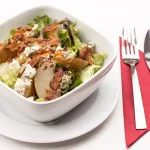The Best Fluffy Pancakes recipe you will fall in love with. Full of tips and tricks to help you make the best pancakes.
When it comes to baking a perfect cake, choosing the right frosting is just as important as the cake itself. Frosting not only enhances the flavor but also adds that finishing touch that makes your cake visually irresistible. Whether you’re preparing a rich chocolate cake, a light vanilla sponge, or a spiced carrot cake, the frosting you select can elevate the entire experience. But with so many different types of cake frosting—from creamy buttercream to glossy ganache—how do you know which one is perfect for your cake? In this guide, we’ll walk you through the best frosting options for every cake, plus tips and techniques to help you apply them flawlessly. Whether you’re a beginner or a seasoned baker, this post will give you all the info you need to create cakes that are as beautiful as they are delicious.
Frosting Recipes You Need to Know
When it comes to frosting, there are countless options to choose from, each offering a unique texture, flavor, and appearance. Understanding the different types of frostings is key to knowing which one best complements your cake. Below are some popular frosting recipes that will suit every occasion, whether you’re decorating for a birthday, holiday, or special celebration.

Buttercream Frosting Recipe
Buttercream frosting is a classic choice for most cakes due to its creamy texture and versatility. It’s made from butter, powdered sugar, and a liquid such as milk or cream, creating a smooth and spreadable consistency. There are several variations of buttercream, such as American, Swiss Meringue, and Italian Meringue, each with its unique properties.
Ingredients:
- 1 cup (2 sticks) unsalted butter, softened
- 4 cups powdered sugar
- 2-4 tablespoons milk or cream
- 1 teaspoon vanilla extract
American Buttercream
This is the simplest and sweetest version, often used for piping and spreading on cakes. It’s perfect for quick and easy decoration.
Swiss Meringue Buttercream
Silky and less sweet, Swiss Meringue Buttercream is made by whipping egg whites and sugar into a meringue and then adding butter. It offers a smooth texture with a lighter sweetness.
Italian Meringue Buttercream
Similar to Swiss meringue but made by pouring hot sugar syrup into whipped egg whites, Italian Meringue Buttercream is light and stable. It’s ideal for a professional, smooth finish on cakes.
Best For: Cakes like chocolate, vanilla, or carrot cake. This frosting can be flavored with vanilla, almond, or citrus extracts and colored with food coloring to match any cake theme.
Ganache Frosting Recipe
Ganache is a rich and glossy frosting made from chocolate and cream. The ratio of chocolate to cream can be adjusted to create different consistencies, from a thick, spreadable frosting to a thin, pourable glaze. It provides a luxurious finish with its smooth texture and deep chocolate flavor.
Ingredients:
- 8 oz (227g) semisweet or dark chocolate, chopped
- 1/2 cup (120 ml) heavy cream
How to Make Ganache
- Heat heavy cream until it begins to simmer.
- Pour it over chopped chocolate (dark, milk, or white).
- Let it sit for a few minutes to melt, then whisk until smooth.
- Allow it to cool and thicken to your desired consistency.
Ganache can also be whipped for a lighter, fluffier frosting, perfect for filling layers of a cake or piping onto cupcakes.
Best For: Chocolate cakes, cupcakes, or tarts. It’s ideal for adding a luxurious finish and depth of flavor.
Fondant Recipe
Fondant is a smooth, pliable frosting made from sugar, water, and corn syrup. It has a more sculptable texture than buttercream, making it ideal for cakes that need detailed decorations or a sleek, professional finish. It can be rolled out into thin sheets and draped over cakes or molded into flowers, ribbons, and other intricate designs.
Ingredients:
- 1 package (10 oz) marshmallows
- 2 tablespoons water
- 4 cups powdered sugar, sifted
How to Make Fondant
- Combine marshmallows and water in a microwave-safe bowl. Heat in 30-second intervals until melted.
- Gradually add powdered sugar, mixing until smooth.
- Knead until smooth and pliable.
Fondant is most commonly used for wedding cakes, themed cakes, or cakes that require precise designs.
Best For: Cakes that require detailed designs and professional finishes, such as wedding cakes or cakes for special events.
Cream Cheese Frosting Recipe
Cream cheese frosting has a tangy, slightly tart flavor that pairs beautifully with spiced cakes like carrot cake, red velvet, and pumpkin cake. It’s made by combining cream cheese, butter, powdered sugar, and vanilla extract, resulting in a creamy, smooth frosting that’s both rich and refreshing.
Ingredients:
- 8 oz (225g) cream cheese, softened
- 1/2 cup (1 stick) unsalted butter, softened
- 4 cups powdered sugar
- 1 teaspoon vanilla extract
How to Make Cream Cheese Frosting
- Beat the cream cheese and butter together before adding powdered sugar.
- Adjust consistency with more powdered sugar for a thicker texture or a little milk for a softer spread.
This frosting offers a perfect balance of sweetness and tang, making it ideal for spiced and fruit-based cakes.
Best For: Cakes that need a balance of sweetness and tang, such as carrot, red velvet, and pumpkin cakes.
Whipped Cream Frosting Recipe
Whipped cream frosting is light, airy, and slightly sweet, making it a perfect topping for lighter cakes like angel food cake or sponge cakes. It’s made by whipping heavy cream and powdered sugar together until stiff peaks form.
Ingredients:
- 1 cup heavy cream
- 2 tablespoons powdered sugar
- 1 teaspoon vanilla extract (optional)
How to Make Whipped Cream Frosting
- Whip heavy cream and powdered sugar until stiff peaks form.
- Add vanilla extract or a dash of flavored liqueur for extra flavor.
To stabilize the frosting, a small amount of gelatin or cream cheese can be added, preventing it from melting too quickly.
Best For: Light and fluffy cakes, like angel food cake or sponge cakes. It’s also great for topping fresh fruit-based desserts or filling cupcakes.
Useful Tools for Making Frosting
Having the right tools on hand makes frosting preparation much easier, especially when you’re working with thick or heavy mixtures. One such essential tool is a hand mixer, which ensures that your frosting reaches the perfect consistency without too much effort.
A great option to consider is the Ninja CI101 750-Watt Immersion Hand Mixer. This powerful hand mixer combines efficiency with a sleek design, making it ideal for everything from light buttercream to thick ganache. It’s especially great for those who frequently bake and need a reliable tool for mixing frosting.
How to Match Frosting with Cake Flavor
Selecting the right frosting for your cake is crucial in balancing flavors and textures. The frosting should complement, rather than overpower, the cake’s flavor profile.The right frosting enhances the flavor of any cake, from rich chocolate to delicate vanilla or tangy citrus.

Chocolate Cake with Ganache or Buttercream
Chocolate cake is rich and dense, so it pairs perfectly with frostings that can hold their own against its bold flavor.
Ganache Frosting
Made from heavy cream and chocolate, ganache creates a glossy, smooth finish that enhances the deep, chocolatey notes of the cake. Its richness adds an indulgent layer to every bite. Dark chocolate ganache is especially great for cakes that feature a rich chocolate flavor, while milk chocolate ganache offers a slightly sweeter, creamier finish.
Chocolate Buttercream
If you want to take the chocolate flavor even further, a chocolate buttercream frosting is an excellent choice. Made with cocoa powder or melted chocolate, it adds a fluffy and creamy texture while intensifying the chocolate taste.
For extra texture and visual appeal, you can also add chocolate shavings or drizzle more ganache over the finished cake.
Vanilla Cake with Whipped Cream or Buttercream
Vanilla cake is light, soft, and subtly sweet, so it’s best paired with frostings that won’t overwhelm its gentle flavor.
Whipped Cream Frosting
This frosting is airy and light, making it an ideal companion for the delicate flavor of vanilla cake. It provides a light sweetness without competing with the vanilla, allowing the cake’s flavor to shine through. You can enhance it with a touch of vanilla extract or citrus zest for added depth.
Vanilla Buttercream
For a richer finish, a classic vanilla buttercream adds a creamy, sweet layer that complements the vanilla cake without overpowering it. You can also experiment with flavored buttercream, such as lemon or almond, to add complexity while maintaining a balance of flavors.
Vanilla cake with whipped cream or buttercream can be dressed up with fresh fruit or edible flowers for a light, elegant look.
Red Velvet Cake with Cream Cheese Frosting
Red velvet cake is known for its soft, moist texture and subtle cocoa flavor. The best frosting for this cake is one that balances the cake’s mild chocolate notes while adding a tangy element to complement its richness.
Cream Cheese Frosting
This tangy, slightly sweet frosting is the classic pairing for red velvet cake. The cream cheese adds a refreshing contrast to the rich, buttery texture of the cake, creating a flavor combination that is both comforting and indulgent. The slight tang from the cream cheese perfectly balances the sweetness of the cake, making it the ideal frosting choice.
You can experiment with different cream cheese frosting variations, such as adding a hint of vanilla or citrus zest, to make it even more unique.
Carrot Cake with Cream Cheese or Buttercream Frosting
Carrot cake is moist and spiced, often packed with ingredients like cinnamon, nutmeg, and walnuts. The frosting should balance the spices and bring out the cake’s warmth and richness.
Cream Cheese Frosting
Like red velvet, carrot cake’s best companion is cream cheese frosting. The tanginess of the cream cheese adds contrast to the sweet, spiced flavor of the cake, while the rich texture enhances the moist crumb. This pairing is classic and beloved for a reason.
Cinnamon Buttercream
If you’re looking for a twist on the traditional, try pairing carrot cake with cinnamon buttercream. The cinnamon flavor will complement the spices in the cake, and the creamy buttercream offers a smooth texture without overshadowing the cake’s flavor.
For extra flair, you can top the carrot cake with chopped walnuts, raisins, or shredded coconut.
Lemon Cake with Lemon Frosting or Whipped Cream
refreshing, bright, and tangy, making it perfect for a frosting that can accentuate its citrusy notes.
Lemon Frosting
A tangy, zesty lemon frosting made with lemon juice and zest enhances the cake’s fresh flavor. It’s a vibrant pairing that provides the right balance of sweetness and tartness. Lemon frosting works well for both buttercream-based and cream cheese-based frostings, giving you flexibility in texture and consistency.
Whipped Cream Frosting
For a lighter, less sweet option, whipped cream frosting can be flavored with lemon extract or zest. This pairing creates a bright, airy finish that doesn’t overpower the cake’s natural citrus flavor.
To elevate the presentation, you can garnish the cake with candied lemon slices or fresh berries.
Coconut Cake with Coconut Buttercream or Whipped Cream
is soft and fragrant, with a natural sweetness that pairs well with coconut-based frostings.
Coconut Buttercream
A coconut-infused buttercream frosting takes the flavor profile of coconut cake to the next level. By adding shredded coconut to the buttercream, you can create a frosting that matches the cake’s flavor, adding both texture and sweetness.
Whipped Cream Frosting with Coconut
If you prefer a lighter frosting, whipped cream flavored with coconut extract or topped with shredded coconut can create a soft, fluffy finish. This pairing is perfect for a more delicate coconut cake or when you want to add an elegant touch.
For extra visual appeal, sprinkle toasted coconut flakes on top of the cake or between the layers.
Bonus Pairing Tips:
- Fruit Cakes: Fresh whipped cream or cream cheese frosting complements the sweetness of berries and citrus cakes.
- Spiced Cakes: Cream cheese frosting balances the spices in pumpkin or spice cakes, adding tang and creaminess.
Pairing the right frosting enhances flavors, creating a balanced and harmonious dessert experience without overshadowing the cake.
Specialty Frostings for Unique Cake Designs
Specialty frostings enhance both the flavor and visual appeal of cakes, offering diverse textures for creative decorating on special occasions. They add a professional touch to birthday, wedding, or themed cakes. Here’s a closer look at some specialty frostings that are perfect for unique and eye-catching cake designs:
Royal Icing
Royal icing is a hard, smooth frosting made from egg whites (or meringue powder) and powdered sugar. It dries to a hard, glossy finish, perfect for intricate designs like piped flowers, lace work, or edible decorations.
- Usage: Royal icing is commonly used for decorative piping and for covering cakes that will be used in detailed design work. It’s ideal for cookies, gingerbread houses, and fondant-covered cakes where fine details are needed.
- Best For: Cakes that require delicate details, such as wedding cakes, holiday cakes, or cakes with lace designs.
- Tip: For a softer, more spreadable consistency, you can add a little water, but for piped designs, keep the icing firm for crisp results.
Swiss Meringue Buttercream (SMBC)
Swiss Meringue Buttercream is a smooth, silky frosting that’s less sweet than traditional American buttercream. It’s made by whipping egg whites and sugar over heat to create a meringue, then incorporating butter and flavoring. The result is a light, airy frosting that’s perfect for creating a smooth, flawless finish for your cakes.
- Usage: Swiss Meringue Buttercream is often used for frosting and filling cakes, as it’s easy to spread and pipe. It’s particularly good for creating a smooth, elegant look on tiered cakes or cakes that require intricate piping.
- Best For: Wedding cakes, buttercream flowers, and creating smooth, glossy finishes. It also works well for ruffle designs or when you need a soft, elegant texture.
- Tip: While SMBC has a creamy consistency, it can be used to pipe delicate swirls and other designs, but it does need to be chilled for a while before using for decorative piping.
Piped Buttercream Flowers
Piping flowers with buttercream frosting is a popular technique for creating intricate floral designs like roses and daisies. The buttercream used can be Swiss meringue, American, or cream cheese, depending on your texture and taste preference.
- Usage: Ideal for cakes with a floral theme, such as wedding, birthday, or Mother’s Day cakes.
- Best For: Cakes needing a romantic, floral look, like birthday and wedding cakes.
- Tip: Use various piping tips (rose, petal, leaf) to add texture and depth to flowers and foliage.
Caramel Frosting
Caramel frosting is a rich, golden-brown frosting made by simmering sugar and butter, often with the addition of heavy cream and vanilla. The caramel flavor pairs beautifully with chocolate, vanilla, and coffee cakes, adding depth and a complex flavor profile. It can be used to create smooth layers on the cake or as a decorative glaze.
- Usage: Caramel frosting is often used as a glaze or to cover cakes with a smooth, shiny finish. It’s also perfect for making drips on cakes, creating a modern, trendy look.
- Best For: Cakes like chocolate cakes, coffee cakes, or cakes that need a luxurious and decadent topping, such as salted caramel cakes.
- Tip: Allow the caramel frosting to cool slightly before applying it to the cake, as this prevents it from being too runny and gives you better control over the application.
Marshmallow Fluff Frosting
Marshmallow fluff frosting is a light, fluffy frosting made by combining marshmallow cream with butter and powdered sugar. It has a sweet, marshmallow flavor and a smooth, spreadable texture. This frosting is ideal for creating a soft, fluffy finish on cakes or for using as a filling in layered cakes.
- Usage: Marshmallow fluff is best used for filling cakes or as a topping for cakes that require a lighter, less dense frosting. It’s often used in combination with other frostings, like buttercream or whipped cream, to achieve a balanced texture.
- Best For: Cakes that need a light, fluffy texture, such as s’mores cakes, chocolate cakes, or peanut butter cakes.
- Tip: Marshmallow frosting can be a little sticky, so it’s often paired with other frostings to create layers. It also pairs well with chocolate ganache to create a layered, gooey effect.
Whipped Ganache
Whipped ganache is a light and airy version of regular ganache. By whipping the ganache after it has cooled and thickened, you can create a frosting that’s perfect for piping or spreading. It has a rich chocolate flavor but with a lighter texture, making it ideal for both frosting and filling.
- Usage: Whipped ganache is great for filling cakes or piping onto cupcakes. It can be used for decorative swirls, or as a filling for layered cakes where a smooth, chocolatey center is desired.
- Best For: Chocolate cakes, cupcakes, and any cakes where you want to create a chocolate mousse-like filling or texture.
- Tip: To achieve the perfect whipped ganache, chill the ganache until firm but not too stiff before whipping. This ensures you get the right consistency for piping.
Mirror Glaze
Mirror glaze is a shiny, reflective glaze made from sugar, water, condensed milk, and gelatin. It creates a smooth, glossy finish on cakes, and is especially popular for cakes that need a modern, sleek look. The glaze is typically poured over a perfectly chilled cake to create a glossy, mirror-like finish that looks stunning in photos.
- Usage: Mirror glaze is best for modern cakes or cakes that require a reflective, high-gloss finish. It’s often used for cakes with clean lines, geometric designs, or cakes that need a luxurious, polished look.
- Best For: Cakes that require a futuristic, elegant, or high-fashion look, such as birthday cakes, wedding cakes, or anniversary cakes.
- Tip: The glaze needs to be poured at the right temperature (around 90-95°F) for it to form a smooth, even coating without dripping off the sides.
Bonus Decoration Tips:
- Specialty frostings often require a bit of patience and practice, but once you master them, you can achieve stunning designs.
- Pairing a smooth ganache with a ruffle buttercream or adding edible gold leaf to royal icing designs can elevate any cake.
- Experiment with sprinkles, edible flowers, or sugar decorations to add extra flair to your specialty frosted cakes.
Specialty frostings bring an extra level of sophistication and creativity to cake decorating. They’re perfect for cakes that need to stand out and make a lasting impression. Whether you’re creating intricate designs with royal icing, piping stunning buttercream flowers, or glazing a cake with a sleek mirror finish, these specialty frostings will ensure your cake is as visually striking as it is delicious.
Tips and Techniques for Applying Frosting Perfectly
Applying frosting to a cake may seem simple, but achieving a flawless finish requires some practice and attention to detail. Whether you’re aiming for a smooth, glossy finish, or a textured, decorative look, the way you apply your frosting can make a huge difference in the final result. In this section, we’ll explore essential tips and techniques that will help you frost your cakes like a professional.
1. Choosing the Right Tools for Frosting
The right tools are crucial when it comes to applying frosting effectively. Here are some must-have tools to help you achieve a clean, professional look:
- Offset Spatula: This is the go-to tool for spreading frosting smoothly over the cake. The offset design allows for better control and a more even application.
- Tip: Use a small offset spatula for detailed areas, and a large one for covering bigger surfaces.
- Bench Scraper: A bench scraper or cake smoother is key for creating a sleek, smooth finish. It’s especially useful for leveling off excess frosting and smoothing the sides and top of the cake.
- Tip: For best results, hold the scraper vertically against the cake, moving it gently around the sides while rotating the cake.
- Piping Bags and Tips: For decorating and creating textured effects, piping bags with various tips are indispensable. You can use different tips for piped flowers, rosettes, and borders.
- Tip: Choose a star tip for a decorative swirl, or a round tip for more precise designs like writing or fine lines.
- Cake Turntable: A turntable allows you to rotate the cake effortlessly while applying frosting, giving you full control over the evenness of the frosting as you move around the cake.
- Tip: When spreading frosting, rotate the turntable slowly to ensure an even distribution, especially on the sides.
2. Achieving a Smooth Frosting Finish
If your goal is to achieve a smooth, clean frosting finish, it’s important to work with a steady hand and the right technique. Here’s how to perfect the smooth look:
- Crumb Coat First: Before applying a thick layer of frosting, start with a thin layer called a “crumb coat.” This initial layer traps any loose crumbs and ensures that the final layer of frosting goes on cleanly. Once applied, refrigerate the cake to set the crumb coat before adding the final frosting layer.
- Tip: A crumb coat not only keeps crumbs in check but also helps the frosting stick better to the cake layers.
- Use Cold Cake for Better Control: Frosting a cold cake is one of the best tips for getting a smoother finish. Cold cakes allow the frosting to set quickly, preventing it from becoming too soft and slippery. Place your cake in the fridge for 15-30 minutes before applying the final layer of frosting.
- Tip: If your frosting is too soft, place it in the fridge for a few minutes before smoothing it on the cake.
- Smoothing with a Hot Spatula: To achieve a glass-like finish, use a hot spatula. Dip your offset spatula in hot water, then dry it off and gently smooth the frosting on the sides and top of the cake. The heat from the spatula helps to smooth the frosting without pulling it or leaving marks.
- Tip: For an even smoother finish, repeat this process as needed, dipping the spatula back into hot water between smoothing sessions.
3. Textured and Decorative Frosting Techniques
Not every cake needs a perfectly smooth finish. In fact, textured frostings can create a rustic, fun, or whimsical look that’s perfect for many occasions. Here are some techniques for adding texture and interest to your frosting:
- Textured Buttercream: Using a bench scraper or an offset spatula, you can create a variety of textures, such as a rustic, scraped finish, or more intricate patterns like swirls or waves. This technique is often used for cakes with a more natural, organic look.
- Tip: You can use a combed edge on the scraper to create patterns in the frosting, like a basketweave or wave effect.
- Piped Decorations: Piping is a fantastic way to add texture to your cakes, and it can be done with a variety of piping tips. For example, a star tip can create textured rosettes or shells, while a leaf tip can be used for creating delicate leaves or vines.
- Tip: Practice your piping on a piece of parchment paper or a flat surface to perfect your technique before applying it to the cake.
- Whipped Frosting for Soft, Fluffy Designs: Whipped frosting, which is light and airy, is often used for creating a soft, pillow-like texture. This is great for cakes that need a delicate, soft design, such as cupcakes or spring-themed cakes.
- Tip: For a fluffier look, you can use a whisk attachment to whip your frosting to create light peaks before piping it onto the cake.
4. Layering Frosting and Filling
When frosting a multi-layer cake, it’s important to ensure that the frosting and filling between each layer is evenly distributed. Here’s how to do it:
- Level Your Cake Layers: Before applying frosting, ensure that your cake layers are level by using a cake leveler or serrated knife. This helps to create an even base and prevents your cake from leaning to one side.
- Tip: Once each layer is level, spread a thin layer of frosting on top before adding your next cake layer. This creates a seamless finish and prevents gaps between the layers.
- Use an Even Hand for Filling: When spreading filling between layers, be sure to use an even amount of frosting, as too much can cause the layers to slip. It’s often helpful to use a piping bag for a controlled filling layer.
- Tip: If you’re using a thick filling, like a ganache or fruit preserve, be cautious not to overfill the layers to ensure your cake doesn’t shift or collapse.
5. Chill and Set
After applying the final layer of frosting, it’s essential to allow the cake to chill for a short period. This helps the frosting set and keeps it in place, especially for designs that need to stay intact.
- Refrigerate for Best Results: After frosting the entire cake, place it in the refrigerator for about 15 minutes to allow the frosting to firm up, especially if you’re working with softer frostings like whipped cream or buttercream.
- Tip: If you’re adding decorations or finishing touches, like edible pearls or sprinkles, it’s often best to do this after the frosting has set, to avoid disturbing the design.
Bonus Tips for Professional-Quality Frosting:
- Stay Patient: Frosting a cake takes time, so don’t rush through the process. Patience will ensure the frosting is smooth and the design is neat.
- Practice Piping Techniques: If you want to add intricate designs, practice different piping techniques on a piece of parchment paper first to master the flow and control.
- Work with Room-Temperature Frosting: Frosting that’s too cold can be stiff and difficult to spread, while frosting that’s too warm can melt. Aim for a consistency that’s easy to work with and spreads smoothly.






[…] foundation of any great cake decoration is the frosting. For a smooth and professional finish, you’ll need the right consistency of […]
[…] you’re looking for something lighter and less rich, a whipped vanilla frosting is a great option. This frosting is airy and creamy, offering just enough sweetness to complement […]
[…] magic of a Bluey cake really comes alive with frosting and decorations. You’ll want to decide whether to use buttercream or fondant, or a combination of […]
[…] Whipped cream […]
[…] Whipped cream for a light and airy topping. […]